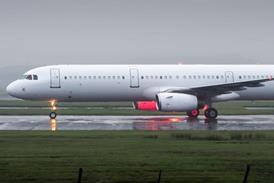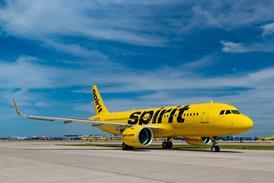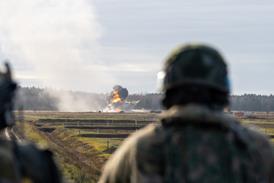Honeywell’s Mike Bevans is one of those people who almost certainly has aviation kerosene running in his veins and a pulse powered by a centrifugal compressor!
As the senior manager of technical sales for the Arizona-based engine company’s propulsion engines for business jets division, he has more than a enjoyed around a quarter of a century in the gas turbine industry, including more than 22 years at Honeywell’s Phoenix plant.
As engineering program manager for Honeywell’s latest engine – the HTF7000 that powers Bombardier’s Challenger 300 – Mike has a vast amount of experience that began when he was the “first guy hired” on the team.
Later he was based with the Canadian airframer in Montreal for three years as the program manager for the Challenger 300 application – so it’s hardly surprising that Mike is immensely proud of “his” engine.
 |
|---|
In December this year, the Challenger 300 will complete its fifth year since certification and Bevans says the engine “has enjoyed unparalleled reliability, fuel efficiency, low emissions and cost-effectiveness”.
The airframe/engine combination has racked up more than 500,000h of service, with 32 of the engines being used on ‘fractional’ service with Bombardier’s FlexJet operation. These are flying for an average of between 1,000 and 1,100h a year (more than originally predicted) and 16 of them have had their first ‘hot section inspections’ after 4,000h, with one achieving around 5,000h.
These inspections, show that the HTF7000 engine is a “truly remarkable piece of kit, with a 99.9% dispatch reliability record”, says Bevans. He is not surprised that Embraer has selected the HTF7000 engine (in 7500E configuration) to power its recently announced Legacy 450 and 500 business jets.
When asked about Honeywell’s proposed HTF10000 engine, Bevans becomes untypically coy. “All I’m at liberty to tell you is that the engine concept exists and that it shares the same architectural layout as the HTF7000 family, although in 10-15% upsized configuration.”
It’s believed that the engine has many entirely new components for improved efficiency; higher thrust-to-weight ratio; lower emissions and lower noise levels assisted by a NASA-developed forward-swept fan. Advanced component technology has already undergone test rig development with more engine core elements currently on test in Phoenix.
If it’s built, HTF10000 will be a true ‘on-condition’ engine, the design allowing for easy access for ‘remove-and-replace’ to be accomplished in hours as opposed to days, and features strategically placed borescope ports for a full 360-degree visibility to all gas path components or easy maintenance.
The HTF10000 capitalises on defence programmes to extend operating temperature and pressure levels and boasts an integrated nacelle and thrust reverser while being capable of pneumatic or electric start. Honeywell claims that the engine will achieve environmental targets of Stage 3 minus 30 EPnDB, and emissions Class 5.
The engine will feature a 4-stage axial compressor, a single stage centrifugal compressor and a 2-stage high-pressure turbine. “The low-pressure section of the engine is still on the secret list,” says Bevans.
It’s believed that Honeywell, along with the other members of the ‘10K club’ - including Snecma’s Silvercrest, Pratt & Whitney Canada and Rolls-Royce – are involved in various current competitions to power new business jets, although they all remain tight-lipped about which airframers are involved. It’s likely to be later this year – or early in 2009 – before that question even comes close to being answered.
Source: Flight Daily News




















